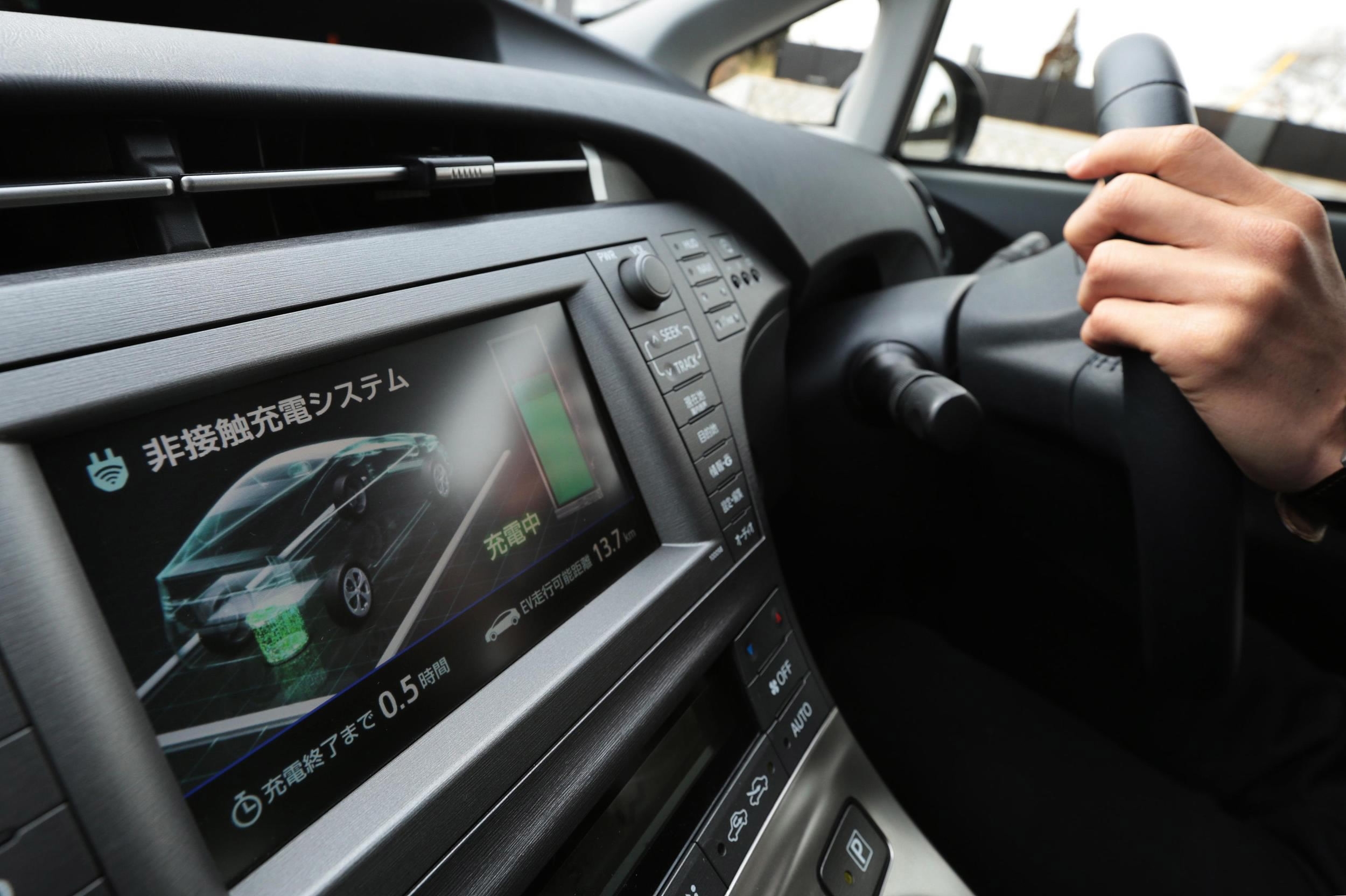A new way to wirelessly deliver electricity to moving objects has been successfully developed by researchers from Stanford University. The innovation could allow electric vehicles to be charged while driving down a highway, potentially cutting costs and time.
Published in the journal Nature, the new technology was introduced via a demonstration in which electricity was wirelessly transmitted to a moving LED lightbulb over a distance of a few feet. It was an update on technology developed by the Massachusetts Institute of Technology (MIT) in 2007, when electricity was transmitted wirelessly to a stationary object.
"In addition to advancing the wireless charging of vehicles and personal devices like cellphones, our new technology may untether robotics in manufacturing, which also are on the move," said Shanhui Fan, a Stanford professor of electrical engineering and senior author of the study.

A monitor displays the charging status inside an electric vehicle. /VCG Photo
However, one technology hurdle still remains. The electricity delivered in the demonstration was only one-milliwatt, whereas electric cars often require tens of kilowatts to operate.
"We still need to significantly increase the amount of electricity being transferred to charge electric cars," said Shanhui Fan.
In fact, the new technology provides a solution to the major drawback of plug-in electric cars currently on the market – the limited driving range. In other words, if more electricity could be delivered, the driving range of electric vehicles could be lengthened significantly.
(Source: Xinhua)
本站部份资料来自网络或由网友提供,如有问题请速与我们联系,我们将立即处理!
版权所有©四级英语单词 网站地图 陇ICP备2023000160号-4
免责声明:本站非营利性站点,以方便网友为主,仅供学习。